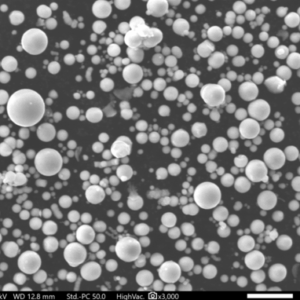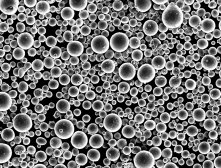Overview of FeCoNiCrV Powder
FeCoNiCrV powder is a high-entropy alloy (HEA) known for its exceptional combination of mechanical strength, hardness, corrosion resistance, and thermal stability. These attributes make it particularly useful in advanced industrial applications like aerospace, defense, automotive, and even cutting-edge research. But what sets FeCoNiCrV powder apart from other metal alloys? Its multi-component system, which includes iron (Fe), cobalt (Co), nickel (Ni), chromium (Cr), and vanadium (V), offers a unique blend of characteristics not found in simpler alloy systems.
This guide will take a deep dive into the world of FeCoNiCrV powder, examining its composition, properties, applications, advantages, and limitations. We’ll also compare different metal powder models, analyze their specifications, and discuss the advantages and drawbacks of each. Finally, we will explore common FAQs about FeCoNiCrV powder to help clear any lingering questions.

Composition of FeCoNiCrV Powder
The core composition of FeCoNiCrV powder consists of five base elements: iron (Fe), cobalt (Co), nickel (Ni), chromium (Cr), and vanadium (V). What makes this alloy remarkable is the equal or near-equal atomic proportions of each component, providing it with a range of unique properties, including high strength and corrosion resistance.
Key Composition Table of FeCoNiCrV Powder
| Element | Role in the Alloy | Atomic Percentage | Attributes Contributed |
|---|---|---|---|
| Fe | Base metal, structural strength | 20-30% | Toughness, magnetic properties |
| Co | Improves hardness | 20-30% | Increased strength, heat resistance |
| Ni | Enhances corrosion resistance | 20-30% | Corrosion resistance, stability at high temps |
| Cr | Adds to wear and oxidation resistance | 10-20% | Oxidation resistance, strength |
| V | Improves toughness and wear resistance | 5-15% | Increased hardness, toughness |
This balanced composition contributes to its unique performance in extreme conditions such as high-temperature environments or situations requiring high mechanical load-bearing capabilities.
Characteristics of FeCoNiCrV Powder
FeCoNiCrV powder’s unique properties are due to its high-entropy nature, where each element contributes equally, leading to the stabilization of multiple solid solution phases. As a result, the powder exhibits high thermal stability and mechanical strength, even at elevated temperatures.
Key Characteristics of FeCoNiCrV Powder
| Characteristic | Description |
|---|---|
| High-entropy alloy (HEA) | Consists of five elements with nearly equal atomic percentages |
| Thermal stability | Exceptional performance at high temperatures |
| Corrosion resistance | Superior resistance to oxidation and environmental degradation |
| Mechanical strength | High yield strength and hardness due to multi-phase solid solutions |
| Wear resistance | Excellent against mechanical wear and tear |
| Magnetic properties | Due to the presence of Fe and Co, the alloy exhibits strong magnetic properties |
| Ductility | Although strong, it retains a degree of ductility to resist brittleness |
The versatility of these characteristics means FeCoNiCrV powder can be used in various demanding applications where both mechanical and chemical resilience are required.
Advantages of FeCoNiCrV Powder
When compared to simpler alloys or traditional metal powders, FeCoNiCrV powder offers several notable advantages:
Key Advantages of FeCoNiCrV Powder
| Advantage | Explanation |
|---|---|
| Superior Strength | The alloy offers higher tensile and yield strength than conventional alloys. |
| Thermal Resistance | Maintains its structural integrity at high temperatures. |
| Corrosion and Oxidation Resistance | Ideal for environments exposed to moisture, chemicals, and oxidation. |
| Wear Resistance | Outperforms other metal powders in terms of resisting abrasion and wear. |
| Magnetic Properties | Ideal for industries where magnetic properties are beneficial, like electronics. |
| Diverse Applications | FeCoNiCrV can be used in aerospace, automotive, and energy sectors. |
| Long Lifespan | Due to its durability, it offers a longer service life in most applications. |
These advantages highlight why FeCoNiCrV powder has gained significant attention for industries that demand superior material performance under challenging conditions.
Applications of FeCoNiCrV Powder
The use of FeCoNiCrV powder spans a wide variety of industries. Thanks to its excellent mechanical and chemical properties, it finds application in aerospace, automotive manufacturing, energy systems, and even medical devices. Below is a detailed breakdown of its uses:
Common Applications of FeCoNiCrV Powder
| Industry | Application |
|---|---|
| Aerospace | Turbine blades, engine components, structural materials |
| Automotive | High-performance engine parts, bearings, gears |
| Energy | Nuclear reactor components, heat exchangers, fuel cell materials |
| Defense | Armor plating, ballistic-resistant components |
| Medical | Surgical instruments, medical implants due to biocompatibility |
| Electronics | Magnetic storage devices, electronic components |
From jet engines to surgical instruments, the versatility of FeCoNiCrV powder is evident in its wide-ranging uses. This material stands up to high stress and extreme environments while offering long-term performance and durability.
Comparison of FeCoNiCrV Powder Models
Not all FeCoNiCrV powder models are created equal. Below are some of the most notable metal powder models, each with specific properties tailored for particular applications.
Top FeCoNiCrV Powder Models
| Model | Description |
|---|---|
| FeCoNiCrV-1 | Base model with balanced strength, hardness, and corrosion resistance. |
| FeCoNiCrV-2 | Enhanced wear resistance, ideal for high-abrasion applications. |
| FeCoNiCrV-3 | Optimized for high-temperature applications, retains mechanical properties up to 900°C. |
| FeCoNiCrV-4 | Improved magnetic properties for use in electrical and magnetic components. |
| FeCoNiCrV-5 | Enhanced toughness and impact resistance for defense and automotive use. |
| FeCoNiCrV-6 | Corrosion-optimized for harsh chemical environments. |
| FeCoNiCrV-7 | Ultra-high strength for critical structural applications like aerospace. |
| FeCoNiCrV-8 | Lightweight but retains excellent strength-to-weight ratio, perfect for lightweight applications. |
| FeCoNiCrV-9 | Superfine particle size for enhanced material consistency and surface finishing. |
| FeCoNiCrV-10 | Powder designed for additive manufacturing and 3D printing processes. |
Comparison Table of FeCoNiCrV Powder Models
| Model | Strength | Wear Resistance | Thermal Stability | Magnetic Properties | Corrosion Resistance |
|---|---|---|---|---|---|
| FeCoNiCrV-1 | Medium | Medium | Medium | Medium | High |
| FeCoNiCrV-2 | High | Very High | Medium | Low | Medium |
| FeCoNiCrV-3 | High | High | Very High (900°C) | Medium | Medium |
| FeCoNiCrV-4 | Medium | Medium | Medium | Very High | Medium |
| FeCoNiCrV-5 | High | High | High | Medium | High |
| FeCoNiCrV-6 | Medium | Medium | Medium | Low | Very High |
| FeCoNiCrV-7 | Very High | Medium | High | Medium | High |
| FeCoNiCrV-8 | Medium | Medium | Medium | Medium | Medium |
| FeCoNiCrV-9 | Medium | Medium | Medium | Medium | High |
| FeCoNiCrV-10 | Medium | Medium | Medium | Medium | Medium |
As shown, each powder model offers distinct benefits, with some optimized for wear resistance, while others excel in magnetic properties or corrosion resistance. Depending on your application, choosing the right model ensures performance is tailored to your specific needs.
Specifications, Sizes, and Standards of FeCoNiCrV Powder
Choosing the right FeCoNiCrV powder isn’t just about its composition and properties; specifications like particle size and standards compliance are equally important.
Specifications for FeCoNiCrV Powder
| Specification | Value |
|---|---|
| Particle Size | 10 µm to 150 µm (depending on the model) |
| Density | 8.2 – 8.5 g/cm³ (approximate) |
| Melting Point | 1450°C to 1600°C |
| Thermal Conductivity | 15 – 25 W/m·K |
| Tensile Strength | 600 – 900 MPa (depending on processing) |
| Hardness (Vickers) | 300 – 500 HV |
FeCoNiCrV powder typically comes in a variety of particle sizes, allowing for greater flexibility in applications like 3D printing or powder metallurgy. Standards such as ASTM and ISO are typically followed to ensure consistency in quality.
Standards Compliance for FeCoNiCrV Powder
| Standard | Compliance |
|---|---|
| ASTM B213 | Test Method for Powder Flow Rate by Hall Flowmeter |
| ISO 3252 | Powder Metallurgy – Vocabulary |
| ASTM F2924 | Additive Manufacturing – Metal Powders |
| AMS 4999 | High-Entropy Alloy Material Standard |
Suppliers and Pricing Details of FeCoNiCrV Powder
FeCoNiCrV powder is available from a variety of suppliers globally. Prices can vary based on the specific powder model, quantity, and purity.
Suppliers and Pricing of FeCoNiCrV Powder
| Supplier | Model | Price (per kg) | Minimum Order Quantity |
|---|---|---|---|
| Supplier A | FeCoNiCrV-3 | $300 | 10 kg |
| Supplier B | FeCoNiCrV-6 | $350 | 5 kg |
| Supplier C | FeCoNiCrV-10 | $400 | 3 kg |
| Supplier D | FeCoNiCrV-1 | $250 | 20 kg |
| Supplier E | FeCoNiCrV-9 | $280 | 10 kg |
These prices can fluctuate based on market demand and the specific properties of the alloy model. It’s crucial to compare suppliers based on both price and quality to ensure you’re getting the best material for your application.
Pros and Cons of FeCoNiCrV Powder
No material is perfect, and FeCoNiCrV powder is no exception. It offers several advantages but also has limitations depending on the application.
Pros and Cons of FeCoNiCrV Powder
| Pros | Cons |
|---|---|
| High Strength and Durability | Expensive compared to simpler metal alloys |
| Corrosion and Oxidation Resistant | Challenging to Process in some applications |
| Good Thermal Stability | Heavier than some alternative materials |
| Magnetic Properties for specific uses | Availability can be limited depending on region |
| Long Lifespan in Harsh Environments | Not ideal for every industry |
While the pros outweigh the cons in most high-performance applications, it’s important to weigh these factors when deciding whether FeCoNiCrV powder is the right choice for your project.

FAQs
| Question | Answer |
|---|---|
| What makes FeCoNiCrV powder unique? | Its high-entropy alloy composition provides a balance of strength, corrosion resistance, and thermal stability. |
| Is FeCoNiCrV powder expensive? | Yes, it tends to be more expensive compared to traditional metal alloys, but its benefits often justify the cost. |
| Where can I use FeCoNiCrV powder? | It is commonly used in aerospace, automotive, defense, and energy industries for high-performance parts. |
| What is the typical particle size? | Particle sizes range from 10 µm to 150 µm depending on the application. |
| Can FeCoNiCrV powder be used in 3D printing? | Yes, certain models like FeCoNiCrV-10 are specifically designed for additive manufacturing processes. |
Conclusion
FeCoNiCrV powder is a powerful and versatile material, offering impressive mechanical properties, corrosion resistance, and thermal stability that make it ideal for demanding industrial applications. With numerous models available, each with its unique specifications, this high-entropy alloy can be fine-tuned to meet the exact needs of a wide range of industries. Whether you are working in aerospace, automotive, energy, or electronics, FeCoNiCrV powder is likely to offer the right blend of properties to improve performance and longevity.














